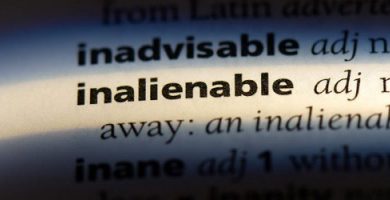What are amphibians?
We explain what amphibians are, their origin and main characteristics of amphibians with examples and vs reptiles. In addition, how these animals and examples are classified.
-
What are amphibians?
Amphibians are known as terrestrial vertebrates that dedicate a good part of their lives to an aquatic environment , and that go through a period of metamorphosis during their development: a series of profound morphological changes that distinguish each stage of their life cycle, and that generally involve a period of aquatic life.
In other words, the first part of the amphibian life cycle is passed in the water , while the second stage on the earth. This dual condition is reflected in the origin of its name: it comes from the Greek amphi (“both”) and bios (“life”) , that is, it has a double life.
Amphibians play an important ecological role, since transport matter and energy from water to land and vice versa . Among them are a good number of everyday species (about 7492 described) that in human civilization have always been associated with transformation, change and, therefore, magic and sorcery.
-
Amphibian Origin

The origin of amphibians is uncertain, even for phylogenetic specialists. Many assume they come from the temnospondilos : a group of primitive tetrapods of the Carboniferous period, precursors of some dinosaurs as well, and the first species to leave the water.
Others assume that they descend from lepospondilos : a distinct group of aquatic tetrapods from the Carboniferous period, which were abundant in Europe and North America. But there is also a third possibility: that both inheritances were true and amphibians have a multiple origin. In any case, amphibians are key to explaining the transit of vertebrate life from water to land.
-
Characteristics of amphibians
In general, amphibians have four mobile extremities and are ectotherms : they regulate their temperature from the environment , which means that they have cold blood, such as reptiles and fish, their closest relatives.
On the other hand, amphibians are oviparous , that is, they reproduce by laying fertilized eggs through the intercourse between male and female , and their laying of eggs usually occurs in aquatic environments . From these eggs, a tadpole hatches, a species of gill larvae, which over time grows and undergoes a gradual metamorphosis until it resembles the adult. Then he leaves the water, undertakes pulmonary respiration and begins his terrestrial life.
Amphibians are mostly carnivorous , becoming important predators for insects, arthropods, worms and even smaller species of amphibians. During their aquatic stage, however, they can be herbivorous or basically omnivorous, depending on the species.
Finally, the skin of amphibians is very particular: it does not have scales, hair or protective covering , since it is permeable to water and consists mostly of glands. Thanks to this, amphibians can always be wet in their terrestrial context, and they can also exchange gases and fluids with the environment (skin breathing). In many species these glands secrete, in addition, toxic substances as a defense apparatus, to discourage their predators; or also contain specialized pigments to camouflage with the environment.
-
Classification of amphibians
Broadly speaking, amphibians are classified as:
- Frogs and toads. Tailless amphibians in their adult stage, with longer hind legs, allowing them to jump (up to 20 times their body in distance). Their skins can be moist and smooth, or dry and rough, depending on their habitat . Some species have a characteristic (croaking) song.
- Salamanders and newts. Amphibians with long body and tail, short legs of the same size, and a certain regenerative capacity that allows them to reproduce lost limbs. They are good swimmers and some species can be poisonous.
- Cichlids The most peculiar amphibians, have a long and cylindrical body, almost worm or snake, since they lost their legs throughout evolution. For this reason they usually swim or slide like snakes. There are barely 42 known species and they are mostly central and South American.
-
Amphibians and reptiles

Amphibians and reptiles are distant relatives, both vertebrates and cold-blooded , but adapted to different habitats. While amphibians can lead a double life in and out of the water, always returning to it to reproduce or to stay wet, reptiles can mostly lead a terrestrial life far from the water, since they do not need to reproduce in it, but can lay their eggs on the ground, since they are protected by a sturdy and waterproof cuticle that keeps them moist inside, and then the young will go through to leave.
Unlike amphibians, reptiles do not go through a metamorphosis, but the offspring have the same adult morphology, only of smaller size (it could be said that metamorphosis occurs during embryonic development inside the egg).
Reptiles come evolutionarily from amphibians , appearing in the lower Devonian, about 310 million years ago. Its emergence marks the beginning of a true conquest of the land by animal life, and it was they who then gave rise to the emergence of dinosaurs, as well as the first mammals .
-
Examples of amphibians

Some everyday examples of amphibians are:
- The rojiazul arrow frog ( Oophaga pumilio ). A poisonous Caribbean frog, present in Nicaragua, Panama and Costa Rica. Its name comes from its intense red and blue color (legs), although its color may change depending on the habitat.
- The common salamander ( Salamandra salamandra ). The most common of Europe’s amphibians of the genus of urodels, is totally terrestrial except when it comes to breeding, and has a black body with unmistakable yellow.
- The European toad ( Bufo bufo ). The most common type of toad of the Bufoidae family, very common in stagnant waters and swimming pools, is brown in color and rough skin, with wart-like bumps.
- Tapalcua or Tepelcua ( Demophis mexicanus ). It is a type of cichlid common in Mexico and Central America, with underground habits, so it not only lacks legs but eyes, replaced by great smell and sensitivity to vibrations.




